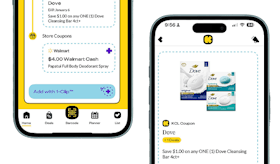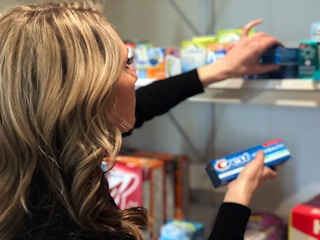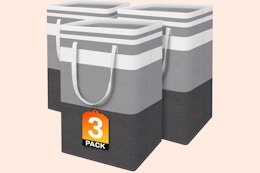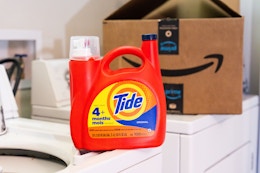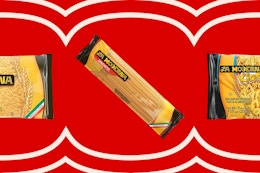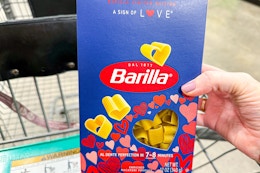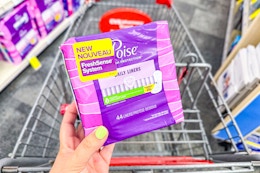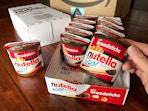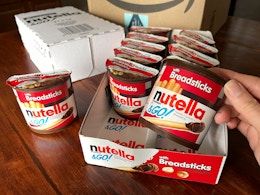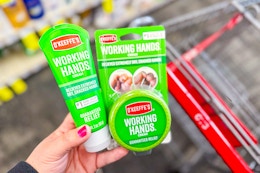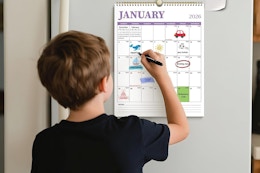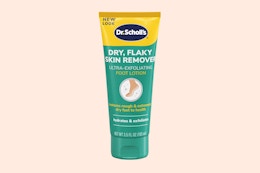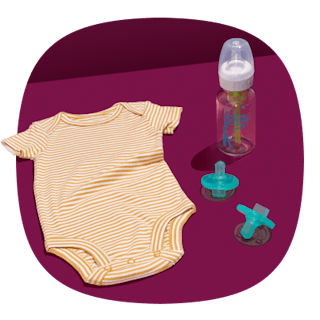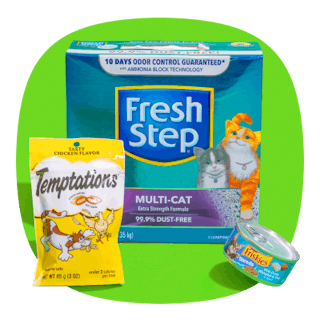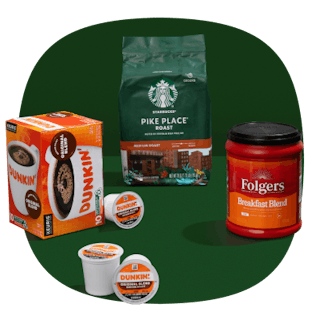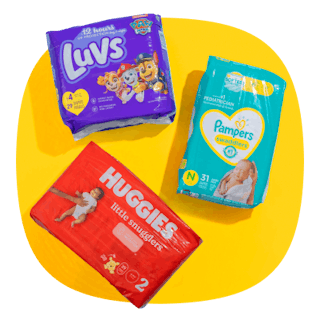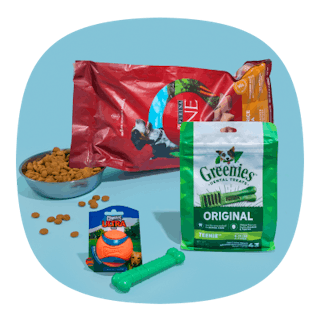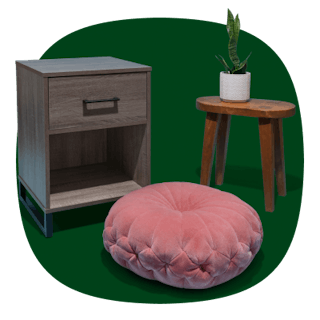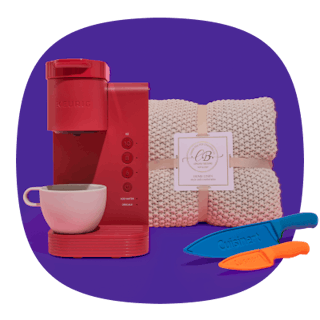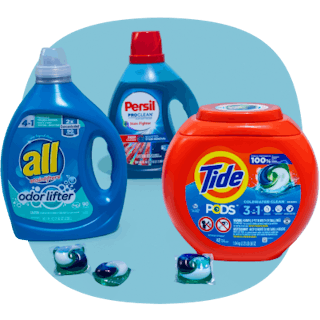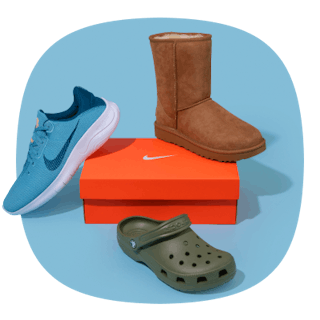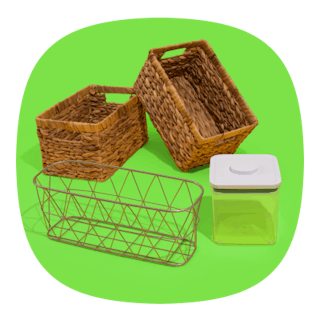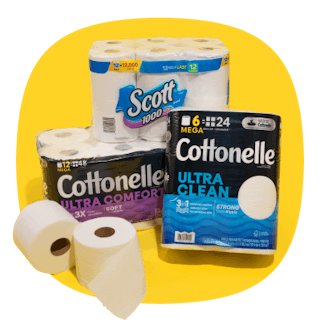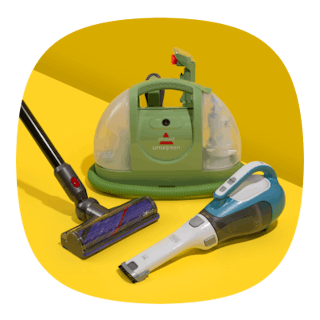I’ll be the first to admit that couponing and building a stockpile of free or cheap products is a little intimidating. But any small effort you make toward saving money in your grocery and household budget will go a long way. Try these easy tips for building a better stockpile and never pay full price for anything again.
Don’t forget to download the KCL app for more tips.
1. Use the Stock Up Price List as a guide and know what to stock up on when prices are lowest.
Before you think about what to stock up on, keep in mind that you should stock up when an item is around 70% off retail price.
But this rule doesn’t apply to all products, which is why we made the KCL Stock Up List. Use it as a guide to know when to buy and when to wait.
In an ideal couponing world, you’d buy everything at it’s six-month stock up price. But you’ll find — especially when you begin couponing — that you need to settle for the three-month price, because you’re low on certain items. No shame!
2. Know how to organize a pantry.
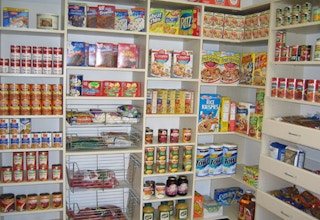
This one is a thing of pure beauty. Here’s a quick checklist on how to organize a pantry to make sure you use up all the items (so you can prove your spouse wrong):
- Ensure shelves can support weight.
- Don’t be afraid to move your stockpile as it grows (some people put shelves in their garage or clear out a hall closet.)
- Keep products easily accessible.
- Track expiration dates and rotate items as you purchase new products.
- If you really run out of room, stop stockpiling until you use up the items, donate them, or gift them to family and friends.
3. Don’t be afraid to stock up on seasonal produce.

If you time it right, you can grab some major savings on seasonal produce. The warm summertime is a perfect time to stock up on certain fruits and vegetables. For example, July is ideal for everything from strawberries and blueberries to corn and peaches. If you’re looking to get the most out of your in-season produce, you can freeze or dehydrate your stockpile to extend its lifespan.
4. Remember to stock up on consumer packaged goods

You may already know to buy produce when it’s in season and freeze or dehydrate it whenever possible. But did you know that consumer packaged foods are seasonal just like produce?
For example, June is National Migraine & Headache Month, meaning you’ll see plenty of savings on pain relief medication. And, with summer starting on Jun. 21, popsicles and iced cream see some big sales. Combine these sale prices with coupons for an exceptional stock-up price.
Use the information from these articles to find out what you should stockpile during each month:
- Top 10 Things to Stock Up on in January
- Top 10 Things to Stock Up on in February
- Top 10 Things to Stock Up on in March
- Top 10 Things to Stock Up on in April
- Top 10 Things to Stock Up on in May
- Top 10 Things to Stock Up on in June
- Top 10 Things to Stock Up on in July
- Top 10 Things to Stock Up on in August
- Top 10 Things to Stock Up on in September
- Top 10 Things to Stock Up on in October
- Top 10 Things to Stock Up on in November
- Top 10 Things to Stock Up on in December
RELATED: The Best Place To Buy (Almost) Everything
5. Expand your stockpile by freezing eggs and other perishables.

In addition to stocking up on produce to put in the freezer, if the price is right, keep in mind that freeing eggs and other perishables like milk, cheese, bread, and even chips and crackers will increase their shelf life.
Believe it or not, these freeze just fine. In fact, did you know the circle indentations on the sides of gallon milk jugs are designed to give room for expansion when you freeze the jugs?
RELATED: Foods You Didn’t Know You Could Freeze
6. Know the difference between a sell by date and expiration date.

This is an important stockpiling rule of thumb. Check it out:
- The “Sell by” date tells the store how long to display products for sale. Products should be purchased prior to this date. “Sell by” is typically found on perishables like meat or poultry
- “Best if used by” is a recommendation for best quality or flavor, not safety
- “Use by” indicates when a product will start deteriorating in quality and flavor as determined by the manufacturer
Supermarkets rotate fresher items to the rear, so I always reach to the back of the refrigerated cases for the freshest milk, cheese, yogurt, etc. Then, when I put new products away at home, I move the older items forward so they get used first.
7. …But go ahead and fudge a little on the food expiration dates for some products.

Now, this is based on personal preference. My husband throws items out if they’re one day beyond the food expiration dates. But I use the sniff test as more of a guideline than the expiration date.
Just know that nobody is going to keel over and die if you scramble week-old eggs for breakfast.
Also, did you know that if its properly sealed up and put in the freezer, instant coffee won’t go bad for 20 years?
RELATED: Items That (Almost) Never Go Bad
8. Remove bulky packaging to make items easier to store.

A back-of-the-door organizer works well for smaller items like toothpaste and deodorant, while shelves above bathroom doors are great for bottles of shampoo, conditioner, and lotion.
If you don’t want items in plain sight, try removing them from bulky packaging and storing the actual product in labeled jars and other decorative containers.
Or squirrel them away under your bed.
RELATED: Laundry Detergent Stockpiles That Will Make You Envious
9. Plan to buy at the three-month stock-up price when you’re low on an item.

When compared to the three-month price, the six-month stock-up price is generally the lowest price for an item and the best time to buy as much as your coupon allows. (Usually two or four items in one visit, depending on the coupon.)
10. Stockpile more than just food, and never pay full price for anything again.

Stockpiling grocery and home goods may be the best place to start, but did you know you can stockpile practically anything and never pay full price again?
Take what you’ve learned couponing for groceries and apply it to everything you buy.
When you know when to pull the trigger on every item you need, your yearly salary won’t matter because you’ll save thousands of dollars every year.
Don’t Scroll Up! Here are the articles mentioned:
Foods You Didn’t Know You Could Freeze
The Best Place To Buy (Almost) Everything
Items That Almost Never Go Bad
Laundry Detergent Stockpiles That Will Make You Envious
UP NEXT: The Best Time to Buy Everything by Month of the Year
Download the KCL app to add and redeem coupons in store
